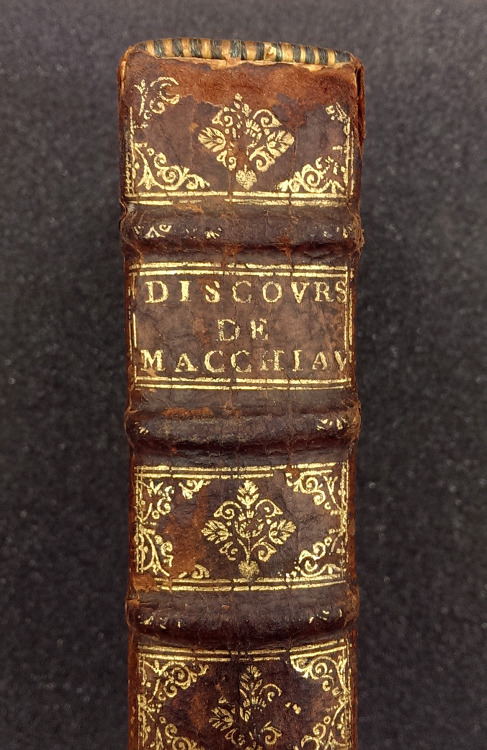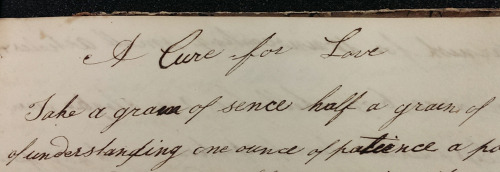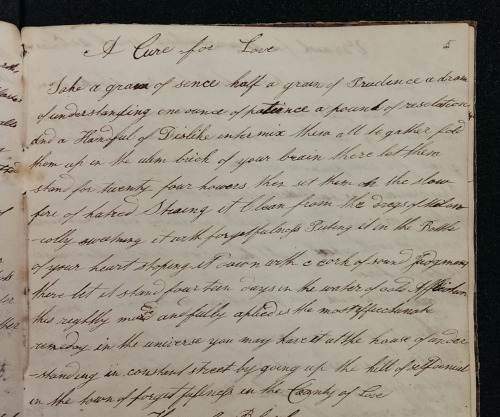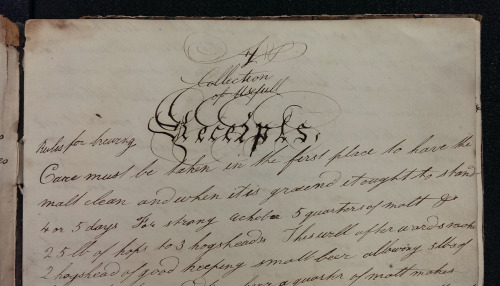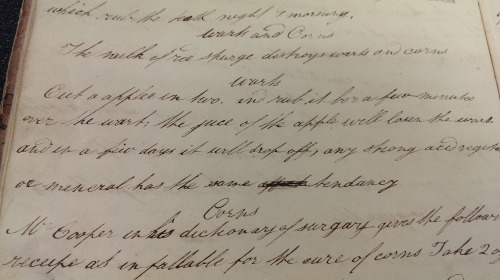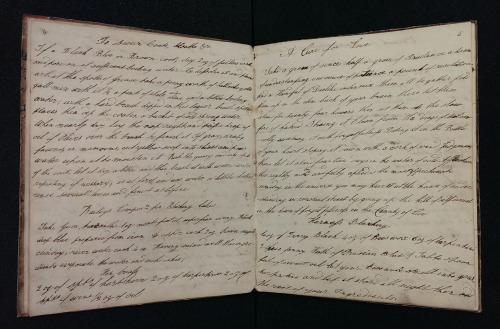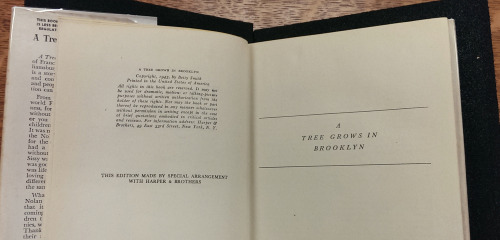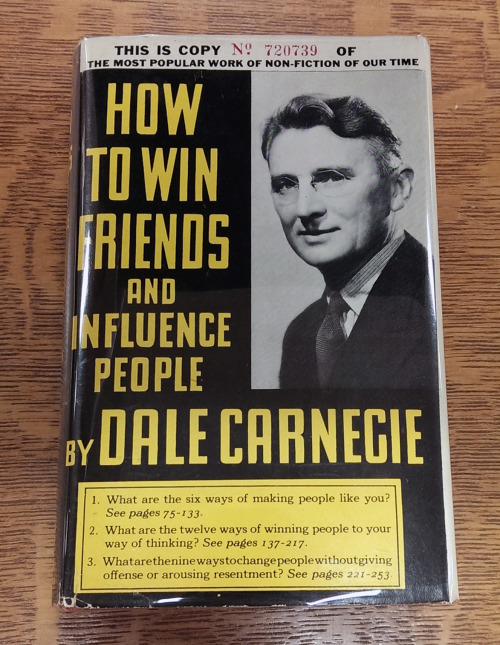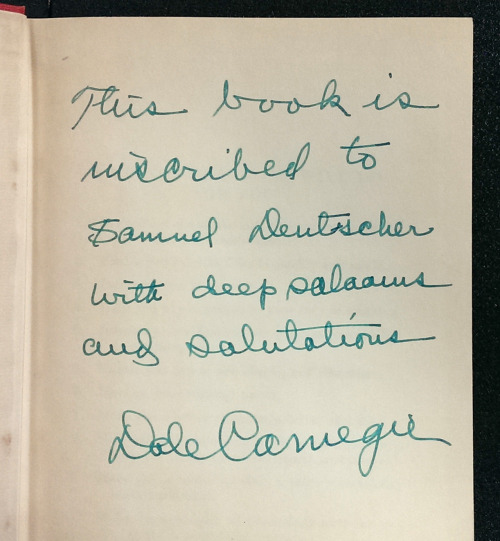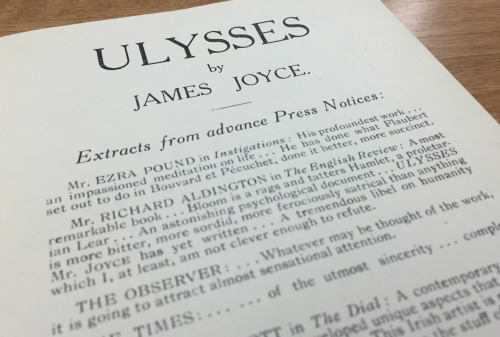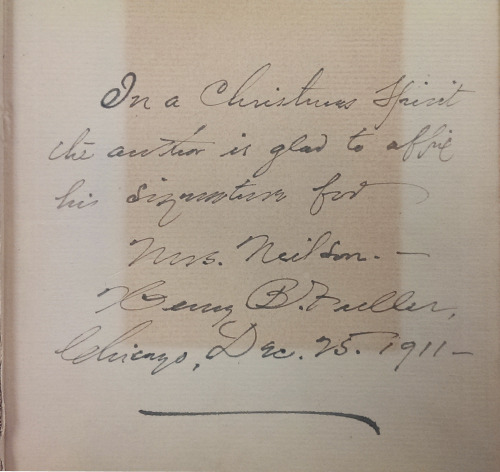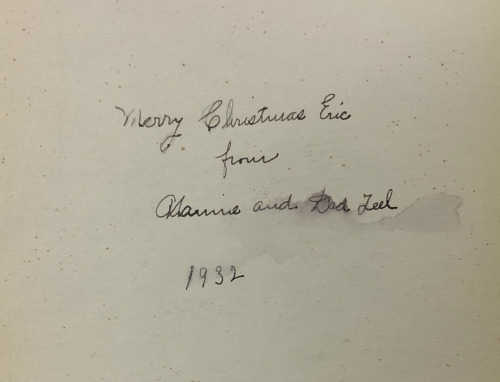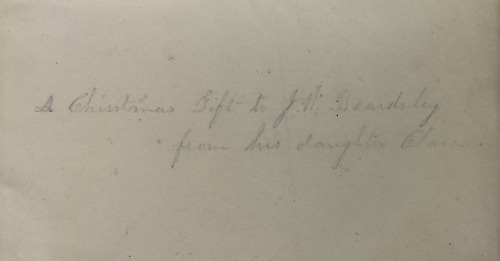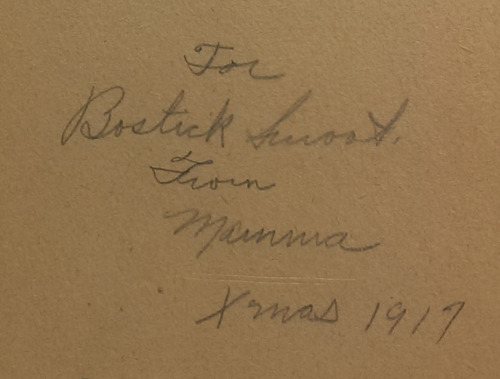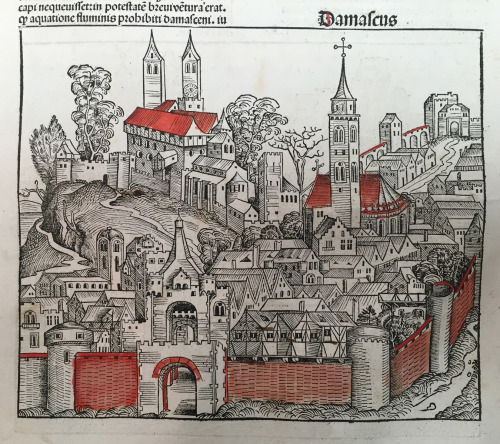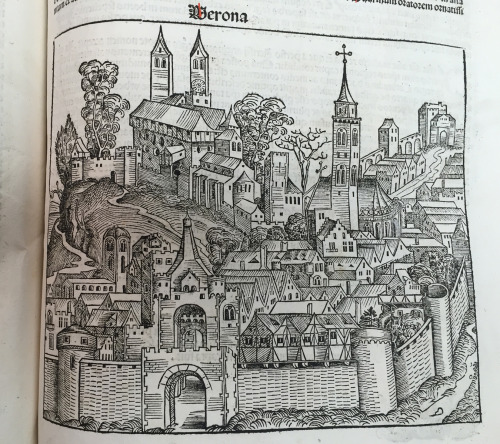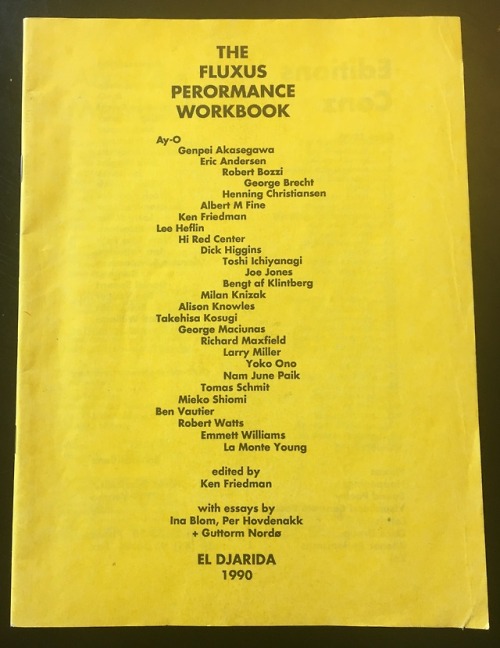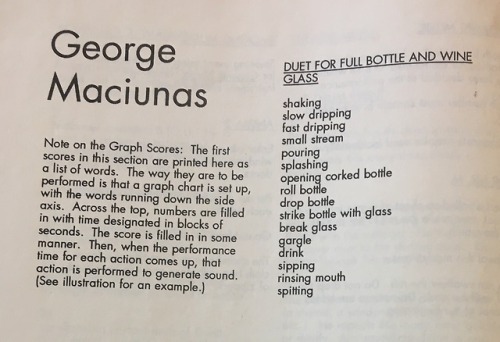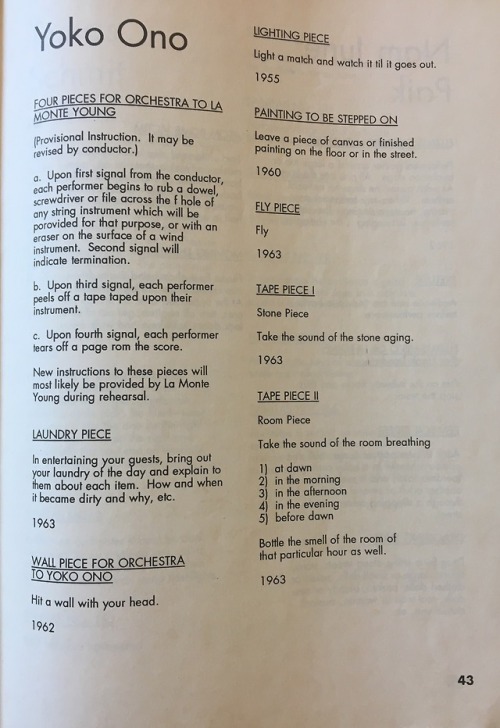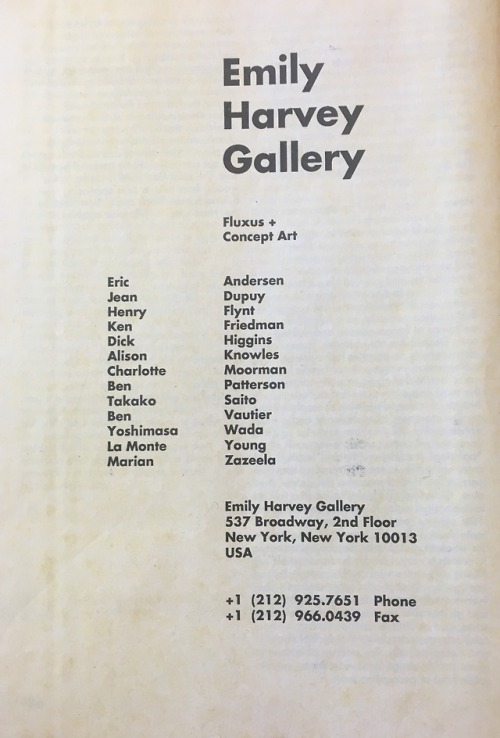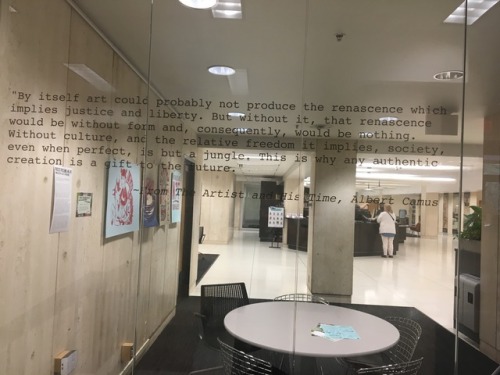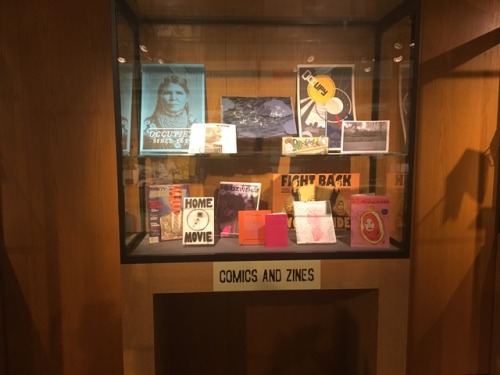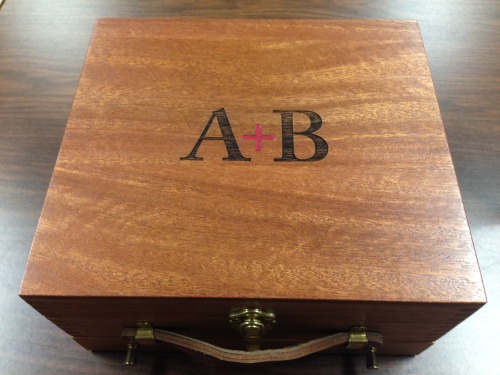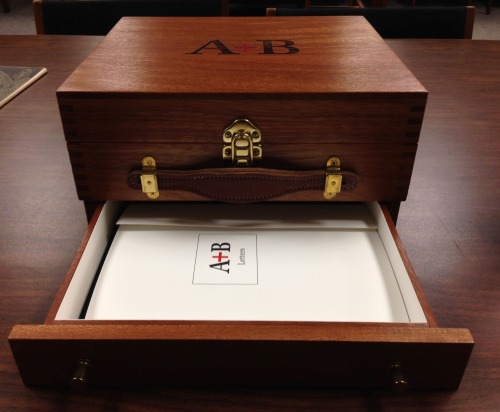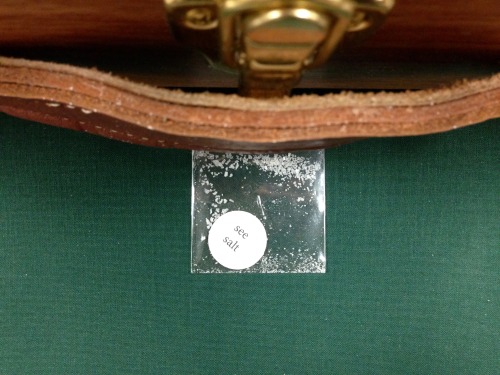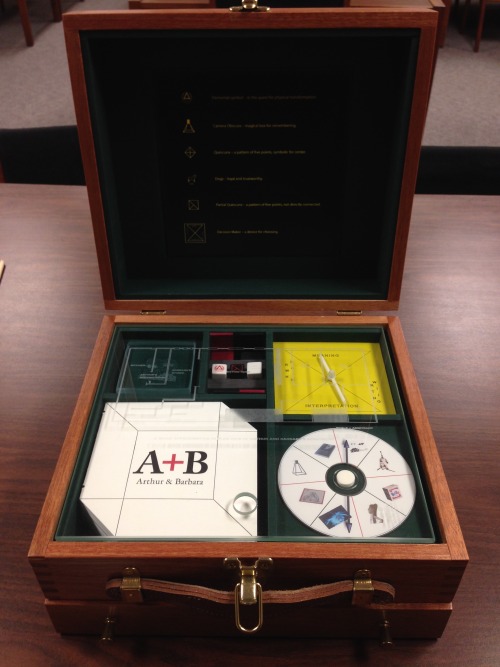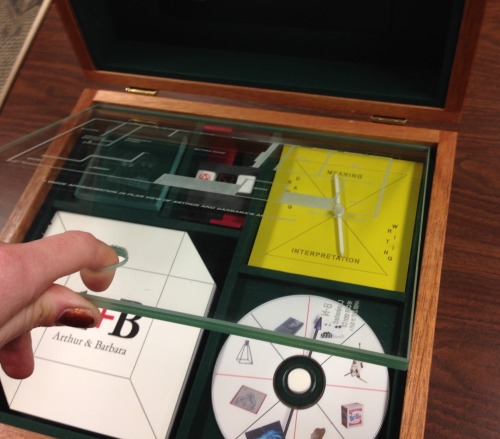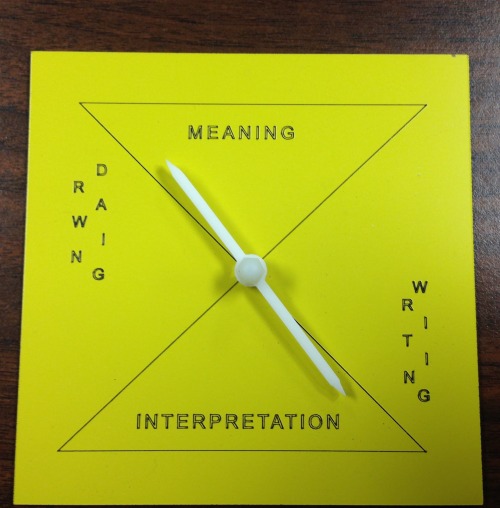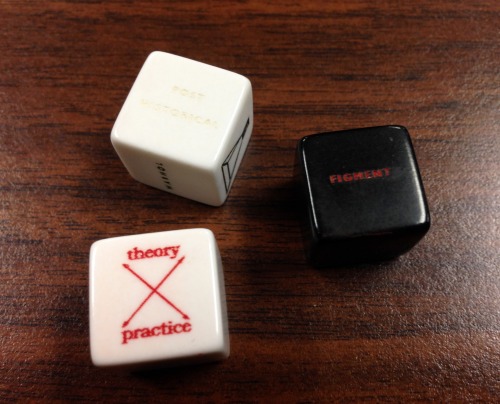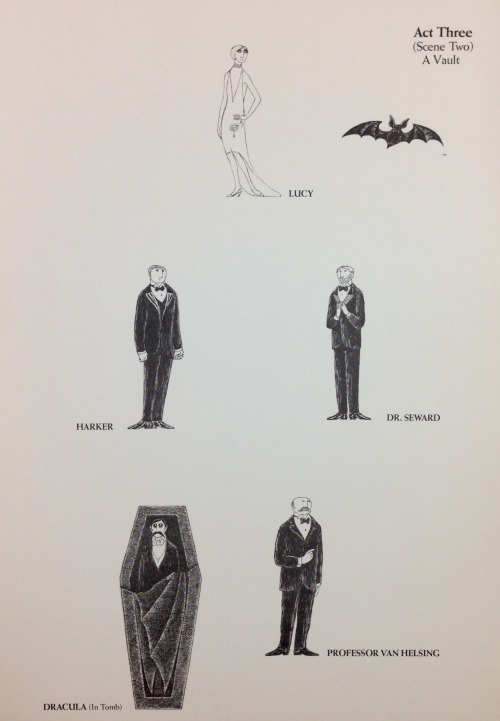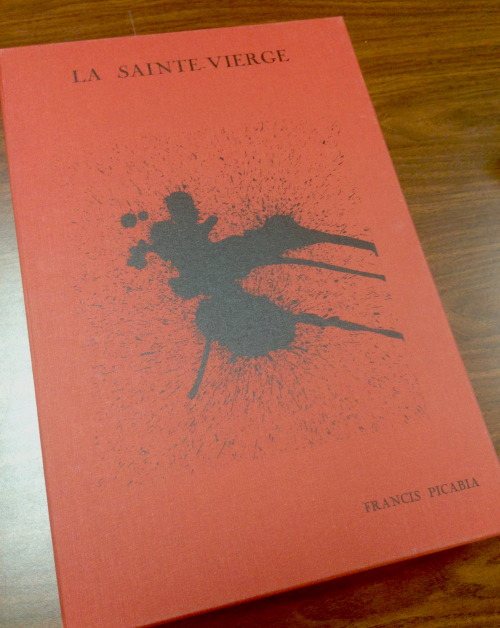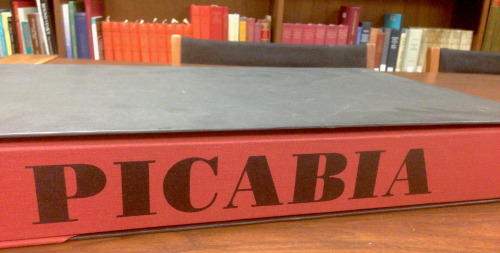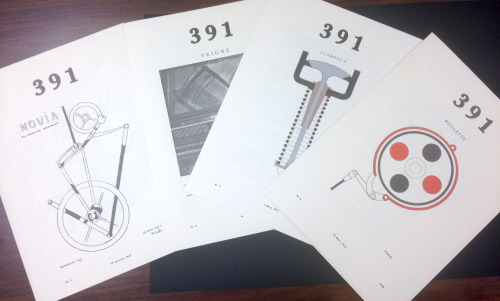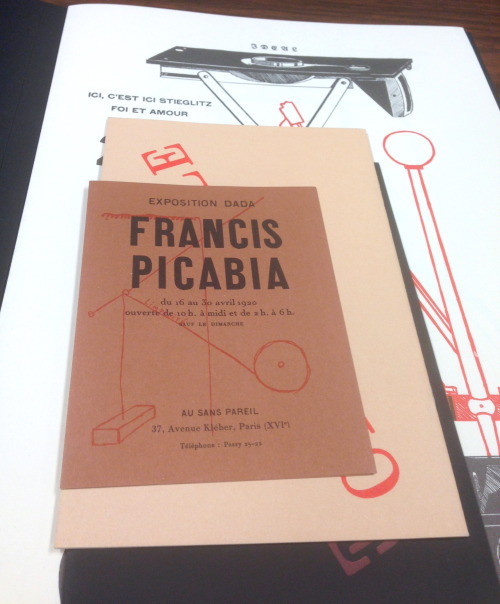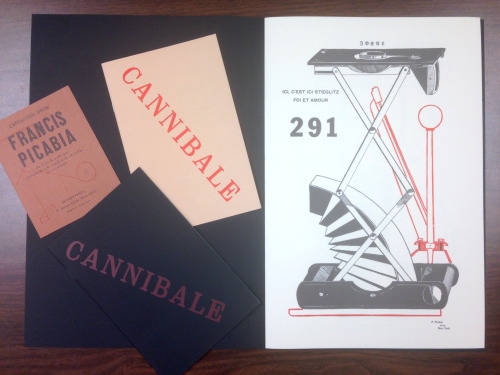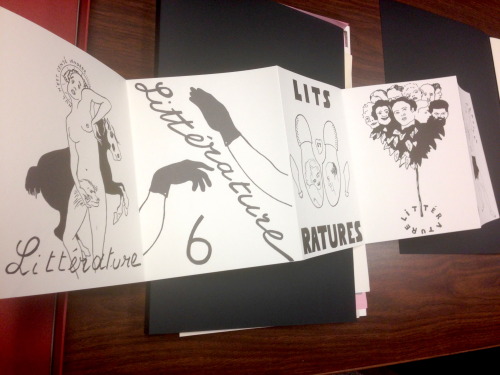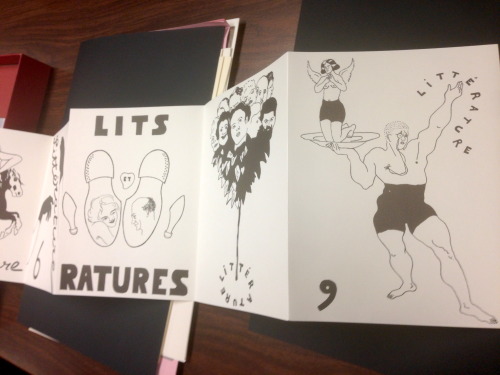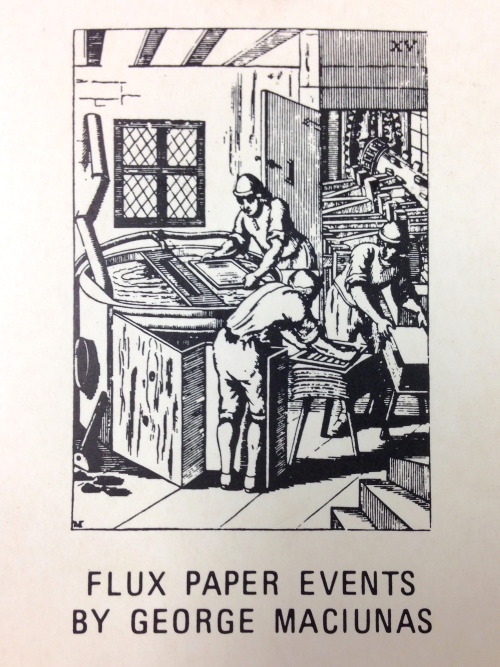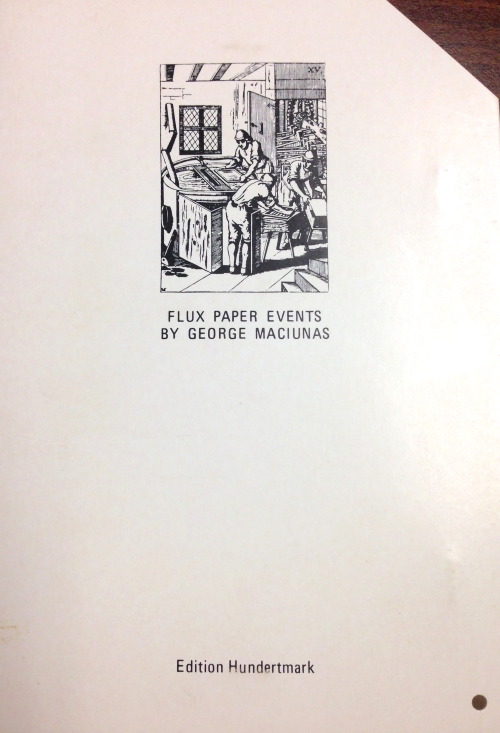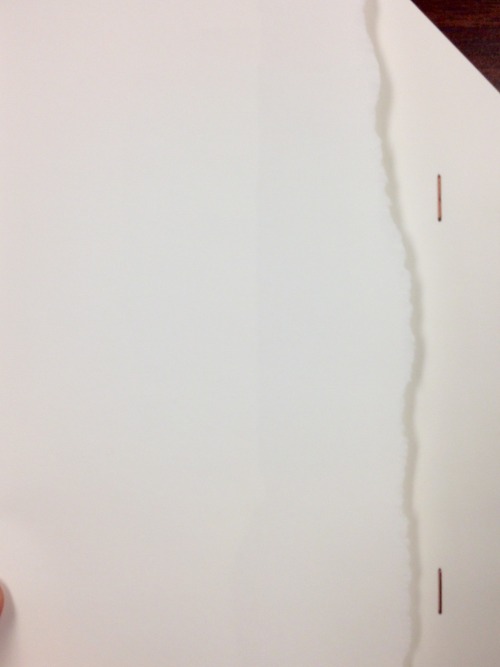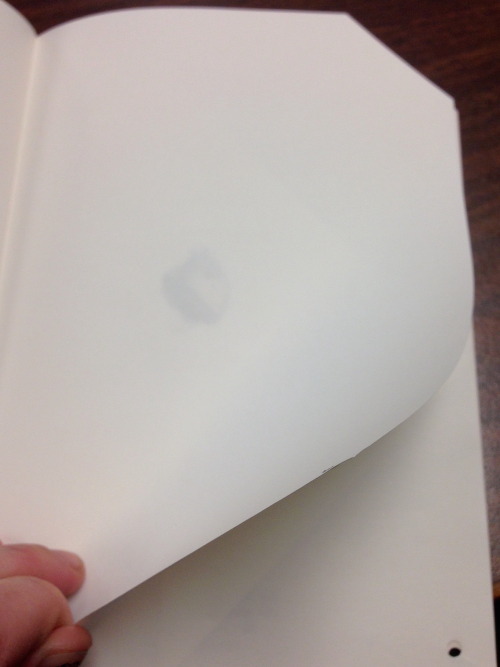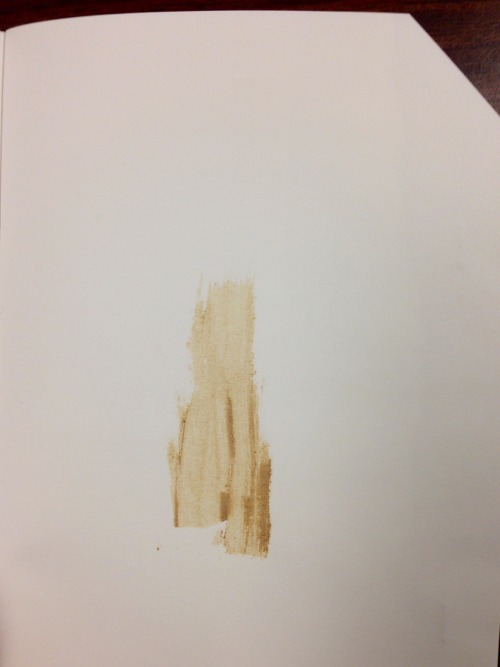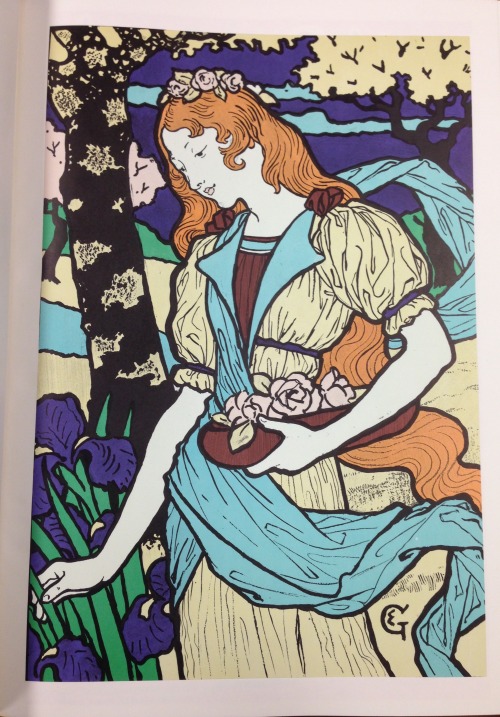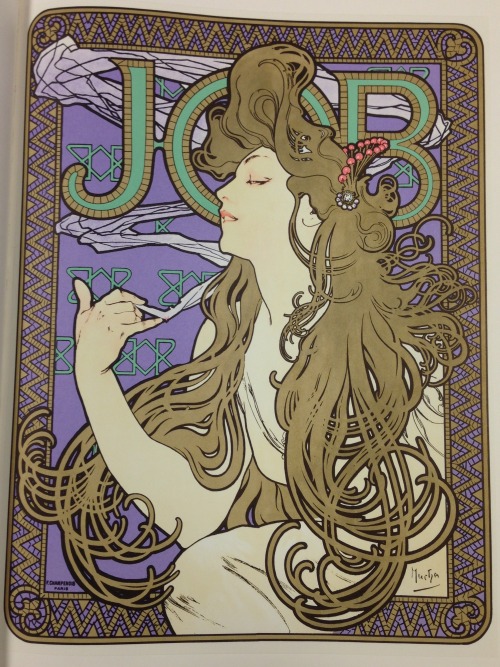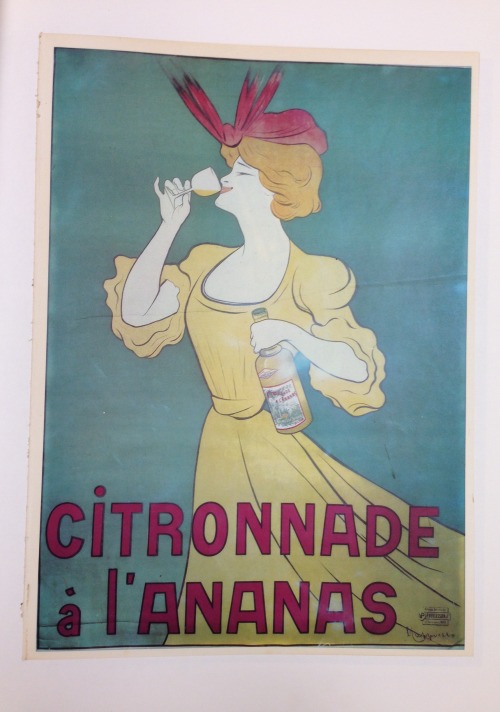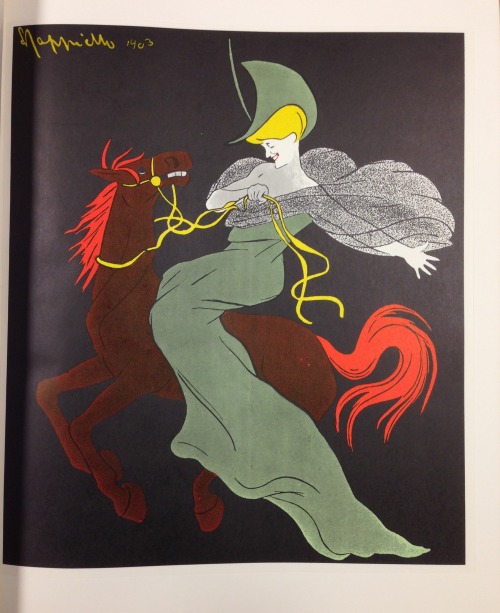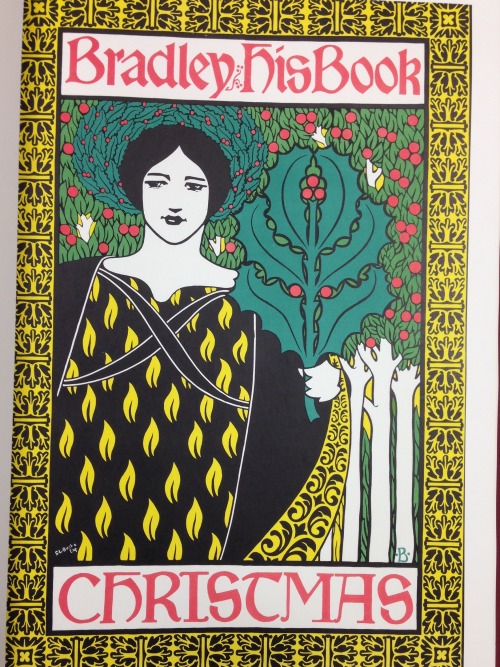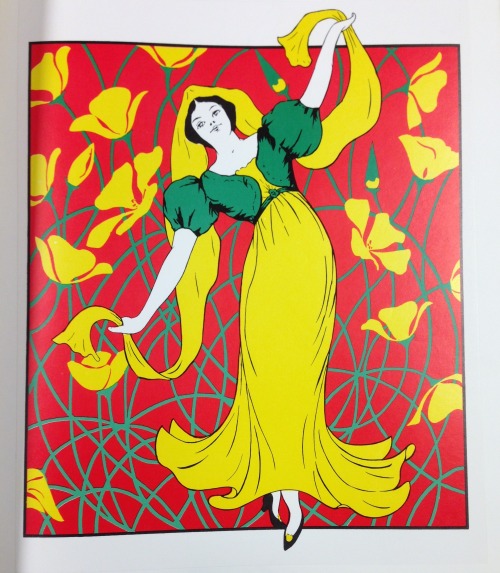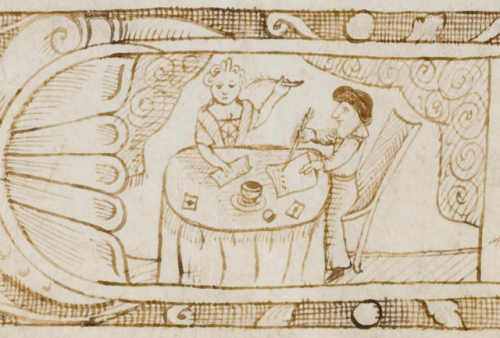#special collections
In preparing for the purchase of another title by the Italian Renaissance philosopher, Niccolo Machiavelli, I found this sixteenth century rebuttal of the principles of Machiavelli by the French jurist Gentillet.
In his book, Discours sur les moyens de bien gouverner, Gentillet analyzes the character of a ruler, rights of parliament, and capacity of councilors among other traits of good statecraft. It is landmark book and quite uncommon, but what struck my eye immediately was the term “CONTREMACH:” boldly written on the top of the text block. At first glance I thought an owner of the book used the term for shelving purposes, but why write such an aid on the top of the text block where it is not readily seen? And more importantly, what does “contremach” mean?
After showing this to Andrew Lundeen, founder of the MSU Provenance Project, he quickly determined that the term “contremach” is really an abbreviated reference to the title (or shorthand name) of the work and was likely used for shelving purposes. That is to say, CONTREMACH:orCONTRE MACH: stands for “Contre [Against] Mach[iavelli].”
~Peter
This Provenance Project guest post was written by Peter Berg, Head of Special Collections and Associate Director for Special Collections & Preservation at Michigan State University.
——————–
Andrew’s note: This fascinating little volume illustrates a couple of interesting facts about working with old books. Firstly, we should never assume that a work only went by one title, or even that the full printed title of a book was the preferred nomenclature. Formal titles were often absurdly long-winded, and so abbreviated titles or referential names were frequently used in their place. This particular copy of Gentillet’s work, for example, bears three different names on the item itself: “Discours sur les moyens [etc.]…” on the printed title page, “Discours de Macchiav[elli]” on the spine, and “Contremach” or “Contre Mach” on the top edge of the text block (the abbreviation is taken from a portion of the work’s subtitle: “ContreNicolasMachiauel Florentin”).
This confusion about how to “properly” refer to the work can be seen in the various names of reprints and later editions as well. Here at MSU we have several versions of this work cataloged under different titles:
Discovrs svr les moyens [etc.]… — With the name copied directly from the title page of this 1579 printing (inc. the archaic use of “V”s for “U”s)
Discours contre Machiavel — The title of this 1974 updated edition
And finally, Anti-Machiavel — A 1968 printing that uses a historically common shorthand title for the work, one very similar to our CONTREMACH edgemark
Secondly, the placement of our CONTREMACH title indicates that this book may not have always been shelved in the way most modern readers and library-goers are familiar with—upright with its spine facing outward. The use of edge-marks such as this, as well as historical depictions of book collections in art, show that books were often stacked on top of one another with the edges of their text blocks visible.
Post link
Valentine’s Day is nearly upon us! And while it can be a time of joy for many, for some it is more bittersweet, recalling memories of past heartache. If you fall into the latter camp this year, don’t fret—we uncovered the remedy you might need in an old manuscript recipe book.
“A Cure for Love” was penned on one page of this 19th century Collection of Useful Receipts, a handwritten book containing recipes for food as well as home remedies for various diseases and conditions. And while some of the directions might be a tad difficult to follow, we’ve been assured that this cure is the best around:
Take a gram of sence [sense] half a gram of Prudence a dram
of understanding one ounce of patience a pound of resolution
and a Handful of Dislike intermix them all together fold
them up in the [???] brick of your brain there let them
stand for twenty four howers [hours] then set them on the slow
fire of hatred Straing [?] it clean from the dregs of Melon-
-colly [melancholy] sweetning it with forgetfulness putting it in the Bottle
of your heart stop[p]ing it down with a cork of sound judgment
there let it stand fourteen days in the water of cold Affliction
this rightly made and fully ap[p]lied is the most effectunate [effectual?]
remedy in the universe you may have it at the house of under-
-standing in constant street by going up the hill of self denial
In the town of forgetfullness in the County of Love
This cure for love appears alongside many other medical remedies, including ointments for “warts and corns” and a supposed cure for smallpox. Whoever created this manuscript apparently considered love a very serious condition indeed.
http://catalog.lib.msu.edu/record=b10316781~S39a
~Andrew
Post link
As part of our initiative to collect the first or earliest possible edition of books cited in the Library of Congress “Books That Shaped America” list, we recently acquired two books on the list that are worthy of recognition in our Provenance Project.
One acquisition is a first edition of A Tree Grows in Brooklyn, which features the autograph of the author, Betty Smith, while the second book is a later printing of a first edition of How to Win Friends and Influence People. In it, the author Dale Carnegie provides a lengthy inscription on the front endpaper:
This book is inscribed to Samuel Deutscher with deep salaams and salutations
Dale Carnegie
The book—which is considered the grand-daddy of all self-help books—sold over 15 million copies, and while we’re confident that our readers are already enthusiastic book lovers, perhaps we’ll study Carnegie’s principles to make our audience feel even more “important and appreciated.”
~Peter
This Provenance Project guest post was written by Peter Berg, Head of Special Collections and Associate Director for Special Collections & Preservation at Michigan State University. Dr. Berg received his undergraduate degree in History from MSU in 1969, his Library Science degree from the University of Michigan in 1975, and his doctorate in History from MSU in 1994.
Post link
We’ve probably all done this before. While out and about, perhaps while traveling or shopping, we lay a scrap of paper inside a book. Maybe it’s a receipt for the book’s purchase, or perhaps it’s a plane ticket. Whatever it is, we probably don’t give it much thought at the time. But decades later, or even centuries, those scraps of paper can prove more fascinating than the host book itself.
Not to discount Robert McAlmon’s first book, Explorations, but what we found laid inside our 1921 first edition was far more interesting: an early advertisement for Ulysses (as it happens, McAlmon edited Joyce’s Ulyssesmanuscript).
Early press for Ulysses more commonly manifests as a four-page prospectus that included a detachable order form. There were two versions of this that indicated Ulysses would be published in “Autumn of 1921”—just like our single-leaf advertisement (the book was finally published in 1922). One of these prospectuses bore the earlier address of Shakespeare & Co., 8 rue Dupuytren. The second of these prospectuses bore the new address, 12 rue de l’Odéon. Our advertisement here has the earlier address, though corrected by hand (someone please tell us if it’s Sylvia Beach’s hand!) to reflect the new rue de l’Odéon address. So with a bit of sleuthing and some help from The Poetry Collection at the University at Buffalo, we can confidently suggest that this rare Ulysses ad was printed about the same time as the first prospectus.
As you might expect, printed ephemera aren’t known for their survival skills. WorldCat locates two other copies of this particular ad, one each at Yale and Cornell. Surely there are others out there, safely filed away in archival collections—or perhaps just languishing inside an old book, a forgotten memento of a visit to a Paris bookstore in 1921.
~Patrick
This Provenance Project guest post was written by Patrick Olson, Rare Books Librarian at MSU Special Collections. Patrick joined Michigan State University in 2014, having previously held special collections positions at the University of Iowa, MIT, and the University of Illinois, where he also earned his MLIS. Prior to becoming a librarian, he spent four years working in the rare book trade.
Post link
One of the most common kinds of presentation notes we find, especially in books printed within the last 200 years or so, is the Christmas gift inscription. Whether from friends, family, or the authors themselves, these notes show that books have been popular gifts for generations.
The inscriptions shown here appear in the following works (in the order in which they appear above):
http://catalog.lib.msu.edu/record=b1967953~S39a
http://catalog.lib.msu.edu/record=b1959977~S39a
http://catalog.lib.msu.edu/record=b2963814~S39a
http://catalog.lib.msu.edu/record=b10009534~S39a
http://catalog.lib.msu.edu/record=b9074626~S39a
http://catalog.lib.msu.edu/record=b2959512~S39a
http://catalog.lib.msu.edu/record=b1958508~S39a
http://catalog.lib.msu.edu/record=b1588168~S39a
http://catalog.lib.msu.edu/record=b1570932~S39a
We hope you’ll continue the tradition and give away lots of books this holiday season!
~Andrew
Post link
The Nuremberg Chronicle (1493) is renowned for its fantastic woodcut illustrations.
A total of 1,809 illustrations adorn the book, but only 645 woodblocks were cut. Most of the illustrations are re-used throughout the book - some as many as 11 times!
Above are six instances of the same illustration, as seen in the copy owned by the MSU Libraries. The same image is used to depict the cities of Damascus, Mantua, Perusia, Verona, Serraria, and Sena.
Apparently, the accuracy of the illustration wasn’t very important!
I love the half-hearted attempts at hand-coloring some of these woodcuts. It reminds me of another early book from our collection, the 1532Thurnier Buch.
~Andrew
Post link





Voices from the Stacks
“I Am Your Sister: Black Women Organizing Across Sexualities”
by Audre Lorde
This pamphlet, part of a series which “presents issues, strategies, and resources which focus upon the political concerns of women of color” (see back cover above) was released by Kitchen Table: Women of Color Press. The press, started by Barbara Smith, Lorde, and other Black feminists in 1980, had the goal of publishing works by women of color, voices that were often silenced elsewhere.
In this purple pamphlet, emblazoned with an anti-homophobia pin on the cover, we read Lorde’s thoughts on unifying with Black women of all sexualities. She pushes back against the idea that Black lesbians are fighting for the same political rights as Black non-lesbians. She asserts that lesbians have families too, and denounces the homophobia she sees. It is addressed to those who might see differences in sexuality as a barrier, and highlights a goal for straight and queer Black women to work together towards justice. It then offers resources for organizing, with the hope that this pamphlet will be used to educate and incite activism.
Audre Lorde, a “black, lesbian, mother, warrior, poet” was an extraordinary activist and writer who used her voice to call for social and racial justice. A former librarian, Lorde’s legacy is vast and we are happy to have a small part of it here at Special Collections and Archives at The University of Iowa.
–Rachel M-H, Special Collections Olson Graduate Assistant
Image of Audre Lorde: copyright Robert Alexander/Getty Images




Guest post from John Martin Rare Book Room
At Hardin Library for the Health Sciences
VORONOFF, SERGE (1866-1951). Étude sur la vieillesse et la rajeunissement par la greffe. [Research on aging and rejuvenation by transplantation] Printed in Paris by Octave and Gaston Doin in 1926. 23 cm tall.
The search for the secret to an eternal youth and long life has captured the imaginations of many cultures. In the West, the ancient Greek writer, Herodotus, introduced the idea of a Fountain of Youth that inspired many legends, including those attached to the Spanish conquistador, Juan Ponce de León. Potion makers, alchemists, and apothecaries sold elixirs promising to reverse the effects of aging. A legacy that lives on in the clickbait social media ads of today.
One quirky side road in the development of Endocrinology was the rejuvenation movement of the late 19th and early 20th centuries. It was kicked off by the self-experimentation of the great 19th century French-Mauritian Neurologist, Charles-Édouard Brown-Séquard, who, at the age of 72, injected himself with extracts of guinea pig and dog testes.
He reported a host of restored abilities, including strength and cognition. It was later discredited as a treatment (eventually attributed to the placebo effect — the testes do not retain the hormones they make), but that did not stop thousands of others from trying the same. And more importantly, it got folks interested in studying hormone-producing tissues more closely.
In the early 20th century, the Russian-French surgeon, Serge Voronoff, followed in Brown-Séquard’s footsteps. Amongst other things, he performed primate to human testicle and ovary transplants. An excellent surgeon, but not always the most diligent researcher, Voronoff would transplant animal gonads into anyone who could afford it. Not surprisingly, the majority of his clients were wealthy men looking to rejuvenate their flagging “sexual vigor,” although Voronoff insisted any sexual improvement was a side effect of overall restored health.
This month, we highlight Voronoff’s seminal work, Étude sur la vieillesse et la rajeunissement par la greffe. [Research on aging and rejuvenation by transplantation]. Whether you are interested in the history of Endocrinology, Urology, transplantation, animal and human research protections, quackery, or early 20th-century printing, this book has it all.
Voronoffwas born in Russia and studied medicine in France. He studied with the transplant pioneer, Alexis Carell, eventually becoming a French citizen and setting up his own research and surgical practice. While practicing in Cairo for a time, he reflected on the accelerated aging experienced by eunuchs.
Believing aging and a whole host of associated health conditions could be reversed with testicular transplantation, he set about studying the effects in farm animals. Not unexpectedly, few young men were willing to donate one of their testicles for human transplantation. He began by using the testicles of executed prisoners (he was neither the first nor the last to misuse prisoners in this way), but the demand for his services was too high. He eventually settled on monkeys and apes as the best animal substitute, setting up a “monkey farm” to ensure a steady supply.
To demonstrate the validity of his procedure, Voronoff often published patient testimonials with “before and after” photographs of his patients (see image above), a technique used throughout the 20th century and now by those peddling “too good to be true” cures. His technique inspired many other surgeons and veterinarians around the world. Thousands of animal to human and animal to animal sexual organ transplants were performed.
He was convinced he would eventually be able to create long-lived superhumans and animals. Voronoff himself performed at least one human ovary transplantation into a monkey, including an attempt to impregnate the monkey with human sperm.
An increasing lack of evidence and Voronoff’s critics, both in science and the media, finally overwhelmed the work, The discovery of hormones associated with sexual organs in the 1930’s rendered transplantation completely unnecessary.
–Damien Ihrig, Curator of JMRBR
*Image of Voronoff (top) is from the Library of Congress





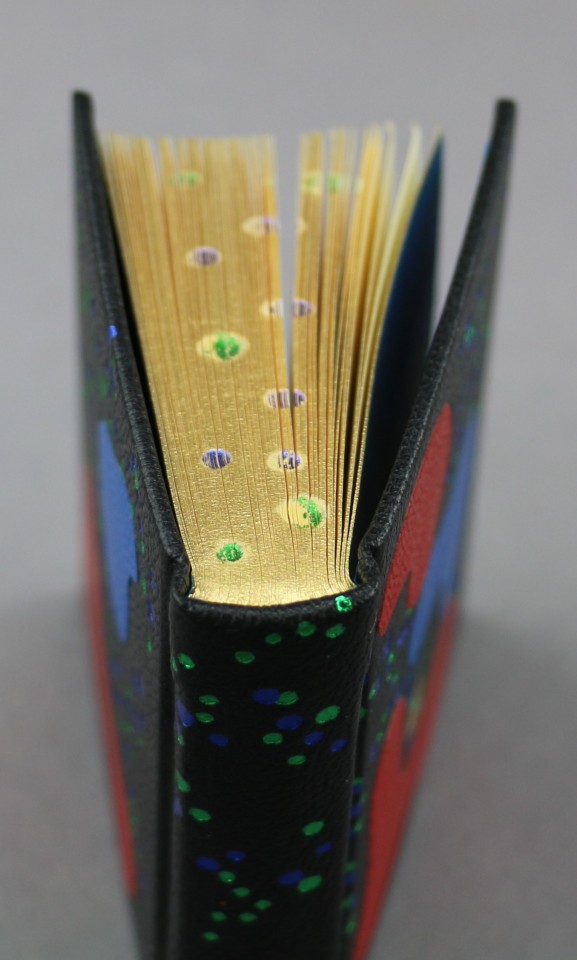

#MiniatureMonday
YouCan Judge a Book By Its Cover: a brief survey of materials
Bernard C. Middleton, author; Kerstin Tini Miura, binder.; David Pankow, editor.; Mel Kavin, introduction, publisher.; Ward Ritchie, book designer.; John DePol, engraver.; Patrick Reagh compositor.; Henry Morris, printer.
With the semester starting, we will be sharing a few books about books to get those in school back in the scholarly mood.
Today’s offering disagrees about the popular saying “You can’t judge a book by its cover”, countering that there is a lot that a book’s cover can tell you.
Special Collections & Archives has three copies of this book, and all are beautifully bound by Tini Miura in black morocco; spine and covers decorated with gilt, metal foil tooled, and multicolored leather circles; leather doublures with multicolored onlays and tooling; silk headbands; gilt edges; in a marbled-paper chemise and slipcase.
So go ahead and judge! This cover does tell you something about how much work went into making this item!
“500 copies of this book were produced with 400 numbered copies for sale. Ward Ritchie designed the book, illustrated by John de Pol, set in type by Patrick Reagh, printed by Henry Morris …”–Colophon.
Individual copies are bound to one of 33 designs each by a different designer bookbinder. All Special Collections copies are signed by author, illustrator, binder, and others.–Catalog
–Diane R., Special Collections Graduate Student



#VoicesfromtheStacks
Hungry for some Southern cuisine?
Alexander Smalls– an opera singer, a James-Beard-Award-winning chef, a Tony and Grammy award winner, the co-owner of two renowned restaurants: The Cecil and Minton’s– could be just the chef you can take inspiration from! He’s appeared on numerous TV shows, magazines, and served individuals such as Toni Morrison, Spike Lee, and Quincy Jones. Here at the University of Iowa’s Special Collections & Archives, one of his books graces the shelves.
Grace the Table: Stories and Recipes from My Southern Revivalis a memoir consisting of a combination of storytelling from Small’s childhood and hometown in South Carolina, through Europe, and to Manhattan, detailing Small’s love for food. He interconnects culture, family history, and more while sharing 100s of his recipes created during his travels. This book sheds light on how he fell in love with cooking and his upbringing with Southern Revival cuisine. Some of his recipes include Southern Revival dishes like mac and cheese terrine with Creole sauce, caramel cake, and black-eyed peas with arugula. There are tales from the first meal he cooked at 6 years old, to meeting Joan Sutherland, to touring Europe as one of the star singers of the Houston Grand Opera production of Porgy and Bess.
Small, his recipes and stories, his history and his southern cooking (a mix of traditional and international flair inspired by his travels), are worth the read!
-Matrice Y, Special Collections, Olson Graduate Assistant
#VoicesfromtheStacks

Slater of Iowa&Fred “Duke” Slater



Calling all the American football fans!
Slater of Iowa by James A. Peterson is a biographical story on Frederick Wayman “Duke” Slater, the first Black All-American player for the University of Iowa, and the first Black lineman in the NFL. Slater is well known for his play with the Iowa Hawkeyes in 1921 where he helped win 10-7 against Notre Dame, breaking Notre Dame’s 20 win game streak!
The book is a short but comprehensive read on the history of Duke Slater. The biography recounts in detail his relationship with football: from childhood to his career on the University of Iowa’s Hawkeye’s football team. It also includes accounts of others he’s played with, some milestones in his early football career (including the time he started wearing a helmet), details of his games at Iowa, his dad’s involvement, and his career at Iowa in general. Slater of Iowa is a quick and exciting read, and as you can see by the images above, Peterson, the author, is good at describing the scene of the games, and giving them life.
The University Archives’ vertical file on Slater details more than just his football career at Iowa! Several clippings talk of his career as a Judge in Chicago, along with Slater Hall, his football accomplishments outside of Iowa, and more. A few snapshots of his file are shown below:



Learning about Slater is definitely worth a visit to Special Collections & Archives!
-Matrice Y, Special Collections, Olson Graduate Assistant









#VoicesFromTheStacks
Bust Zine
What began as a black-and-white Xeroxed feminist fanzine in 1993, Bust evolved into a magazine that continues to have a cult following. Founded by Debbie Stoller, Marcelle Karp, and Laurie Henzel, who asked their friends to “write stories they didn’t see reflected in the media about their lives,” the magazine publishes four times a year and is a respected feminist space for writers. They balance humor, social or personal topics of interest, and fun.
Our copies of Bust are held in the Erik Farseth Zine Collection, but we are also home to many interesting zine collections, many of them centering women, that run the gamut from affordable early DIY efforts to more expensive publications.
Whether you’re interested in some of the cool women featured on the cover, or you’re simply a person “with something to get off your chest,” you will find something interesting inBust and all of the great zines we have here at Special Collections & Archives.
–Rachel M-H, Special Collections Olson Graduate Assistant




Guest Post from John Martin Rare Book Room
Located at Hardin Library for the Health Sciences
UNKNOWN.Medicinal plants scroll from Japan’s mid-Edo period. Estimated date of creation is between 1727 and 1800. 29 x 800 cm.
This book blends all of the things that make working with our collection so rewarding: the paper, how it feels, the artistry, how it smells, the printing, construction, content, and evidence of the life it has lived. Simply known as the Medicinal plants scroll, it is an 8-meter scroll from Japan’s Edo period (1603-1867) containing beautiful hand-painted illustrations.
Japanese hand-scrolls, or emakimono, are not meant to be read or displayed completely unfurled. Rather, each panel should be read, one at a time, starting at the right and reading to the left. The right hand works in concert with the left to roll up the scroll at the same time as a new panel is exposed. This is considered especially important for narrative scrolls, such as the famous Tale of Genji.
Emakimono, distinguished from hanging vertical scrolls, or kakemono, are a form of communication almost as old as the Japanese written language. Starting with characters imported from China in the 5th century, the Japanese written language has evolved substantially since then. The use of Chinese characters, however, lasted for centuries. In fact, many of the Japanese books in the Rare Book Room collection use Chinese characters, including the Medicinal plants scroll.
TheMedicinal plants scroll is, as its name suggests, a catalog of native Japanese plants, describing their habitats, flowers, fruits, and medicinal uses. Each brief description is accompanied by a hand-painted illustration of the plant, usually in bloom. Thanks to the generosity and hard work of our colleague, Tsuyoshi Harada, our Japanese Studies Librarian, we have a detailed translation of the scroll.
Due to his efforts, we have identified each plant, including Cyrtosia septentrionalis in the image in the introduction, also called Yamashakujo or Tuchiakebi, and Panax japonicus, or Japanese Ginseng, seen here. Unlike traditional ginseng, this guide recommends avoiding the very bitter root of P. japonicus and instead using the root hairs.
The scroll also includes references to other medicinal plant resources available at the time. We are excited to see if we can locate any of these as well.
The scroll is in excellent condition. There is very minor staining here and there, but the original paper is otherwise spotless. It has been rebacked fairly recently with a modern paper containing gold flecks. Replacing the paper support on the back as the scroll ages is a customary practice. Emakimono are not made from a continuous roll of paper, but rather equally sized sheets that have been cleverly glued together, combining long fibers that extend out each side of the sheets. The layers of backing paper then add support and durability.
–Damien Ihrig, curator






#VoicesfromtheStacks
The Star Gazer: Planisphere PoetryandLunar Volvelle, both by Monica Ong
This week we are looking at two works by book artist Monica Ong. Ong is a 2nd generation Chinese-Filipino American who was born and raised in Chicago, IL.
The Star Gazer: Planisphere Poetry depicts the Chinese night sky from the northern hemisphere. It is based on the Soochow Astronomical Chart of 1193. This star chart holds small phrases of beautiful prose weaved around constellational lines to form the poetry within this piece. Taken directly from her Proxima Vera site, there are a few steps to read this structured poem:
“To view the stars, turn the disc to align the desired date with the hour of night. Face south and hold the planisphere overhead with the corner marked North facing north. The map will reveal a celestial poem that awaits you among the asterisms. Let the eyes wander and read aloud to someone dear.”
Ong not only wrote the poetry for this piece, but she also designed the art and construction of the book, including its typesetting. She used gold foil stamping, die cutting, and had it put together by a letterpress studio in Syracuse, New York.
We have another one of her items as well, Lunar Volvelle, which can be interpreted in any way you wish and viewed in our reading room!
Happy gazing. ⭐
-Matrice Y, Special Collections Jr. Olson Graduate Assistant







#VoicesFromThe Stacks
Mexico: The Day of the Dead
This anthology, compiled and edited by Chloë Sayer, opens with a quote by Octavio Paz, Mexican poet, from his book The Labyrinth of Solitude: “The word death is not pronounced in New York, in Paris, in London, because it burns the lips. The Mexican, in contrast, is familiar with death…”
For many with roots in Mexico (and other Latin American countries), November 2 marks the last day of the holiday celebrating loved ones who have passed away, with traditions that date back to Aztec and other Mesoamerican civilizations. A holiday that allows people to reconnect with the dead, Día de los Muertos is marked by the making of altars with beautiful ofrendas (offerings) decorated with skulls, marigolds, bread, drinks, and other personal memories and photos of the deceased.
This box of artefacts includes a book, a shiny green papel picado cutout, copies of art by Frida Kahlo and Diego Rivera, and art by Mexican artists listed below. At Special Collections & Archives, we are honored to have work highlighting such an important cultural holiday for many.
Tin skeleton (milagro) by Maurilio Rojas
Papercut by Aarón Velasco Pacheco
Prayer-sheet and Posada print by Arsacio Vanegas Arroyo
Poster of Diego Rivera’s mural Day of the Dead
[Mural:The Day of the Dead. Copyright Diego Rivera]
Feliz Día de los Muertos!

–Rachel M-H, Special Collections Olson Graduate Assistant






Guest Post from John Martin Rare Book Room
At Hardin Library for the Health Sciences
Early Spanish anatomy book from Manuel de Porras.
DE PORRAS, MANUEL. Anatomia Galenico-moderna / compuesta por el doctor Don Manuel de Porras, cirujano de su magestad, y de los Reales Hospitales de la Corte, y Examinador del Real Protomedicato [Modern Galenic anatomy: composed by Dr. Don Manuel de Porras, surgeon of his majesty, and of the Royal Hospitals of the Court, and Examiner of the Royal College of Physicians]. Printed at the Imprenta de Musica by Bernardo Peralta in 1716.
De Porras was a surgeon to King Felipe V (the first of the French Bourbon dynasty to lead Spain) and an instructor of surgery and anatomy. Felipe instituted many reforms, mostly to reshape the monarchy and consolidate power, but also to improve Spanish science and medicine. This included the importation of ideas and practitioners from universities throughout Europe. De Porras leveraged this knowledge transfer to create his most well-known book, Anatomia Galenico-moderna, an anatomy book for surgeons.
Criticized as, amongst other things, being “unoriginal,” de Porras nevertheless was the first to synthesize ancient thinking on anatomy with the latest from the European masters, and write in his native Spanish - not the traditional, but less accessible, Latin or Greek. Anatomia… would increase the accessibility of this knowledge and inspire new Spanish anatomical works throughout the 18th century.
Anatomia… is the first Spanish anatomy book published in the 18th century. It also represents a concerted effort on the part of the new king and the doctors and surgeons of Spain to create medical works in Spanish. This was meant to make these texts more accessible and to burnish the reputation of Spanish medicine as an equal to their European peers.
De Porras’s work is also unique in the number of prefaces included in the 1716 printing. The majority of the seven prefaces, all by different authors, spend a considerable effort to defend Spanish medical science from past European critics. They offer Anatomia…as proof that Spain was no longer a scientific and medical backwater.
Regardless, the book was not the most well-received. The book’s most vocal critic was Martin Martínez, one of king Felipe’s physicians and also an anatomist. Martínez took a great interest in the improvement of medical education and played a major role in establishing the anatomical amphitheater in the general hospital at Madrid. His main complaint about de Porra’s work was the nature of the language and vocabulary de Porras employed, given its intended audience - surgeons. He felt the book adequate enough for learned physicians, but too confusing for the more brutal and straightforward work of the surgeon.
This complaint highlights the contentious relationship between physicians and surgeons, two very different professions at the time. Among Martínez’s several works is his own anatomy book, Anatomia completa del hombre [Complete anatomy of man], which was first published in Madrid in 1728 (we have his second edition, printed in 1745). A comprehensive work, it became a popular text with at least six editions.
Anatomia… contains several engraved illustrations by Matías de Irala Yuso, who also contributed illustrations to Martínez’s Anatomia complete del hombre. The illustrations are mostly anatomical, but he does include an engraving of de Porras and another of St. Francis Xavier receiving medical treatment.
-Curator Damien Ihrig
NEW ACQUISITION: The Fluxus Performance Workbook, 1990
“The first examples of what were to become Fluxus event scores date back to John Cage’s famous class atThe New School, where artists such as George Brecht,Al Hansen, Allan Kaprow, and Alison Knowles began to create art works and performances in musical form.One of these forms was the event. Events tend to be scored in brief verbal notations. These notes are known as event scores. In a general sense, they are proposals,propositions, and instructions. Thus, they are sometimes known as proposal pieces, propositions, or instructions”
Post link
PROTEST PUBLISHING AND ART: From the Copy Machine to the Internet
March 13 - May 19, 2017
A culminating exhibit of protest publishing and art featuring zines from the Culture Wars Zine Collection, student made zines, protest posters, and performance art. The exhibit is a collaboration between the University Libraries, the Department of Communication Studies, the Department of Art and local artists.
Opening Reception: April 20th 5-7:30pm
4th floor of Wilson Library, T.R. Anderson Gallery
309 19th Ave S
Minneapolis, MN 55455
United States
Pannel discussion at 5:30pm with local artists, faculty and students
Refreshments provided
Post link
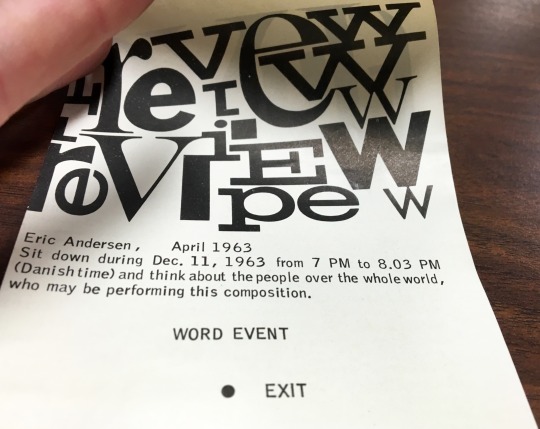
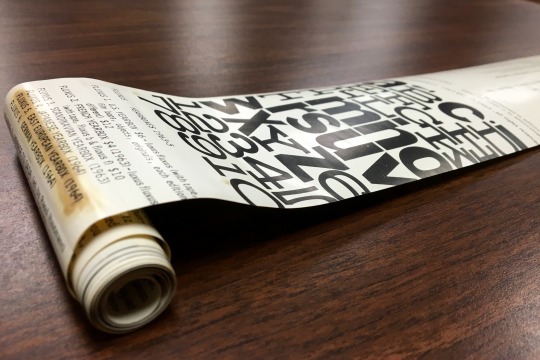



WEIRD FORMAT WEDNESDAY: Fluxus Preview Review by George Maciunas, 1963
We have severalFluxusitems in our collection, this scroll is one of the recent additions.
Vertical scroll printed in offset (both recto and verso) on three joined strips of coated stock, rolled as issued. The scroll includes a montage of scores, performance photographs, information on future performances, listing of past and future Fluxus publications, and the definition of the hyper-word “Fluxus”. Contributors include: Eric Anderson, Ben Patterson, La Monte Young, Jackson Mac Low, Dick Higgins, Daniel Spoerri, J. J. Lambert, Henry Flynt, Yoko Ono, etc. Editorial committee: Chairman, George Maciunas; Cross section, Nam June Paik, Emmett Williams; U.S. section, La Monte Young [and others], as well as sections representing other countries.
WEIRD FORMAT WEDNESDAY: A+B - Arthur & Barbara, 2011
“Arthur & Barbara is a portrait of art critic/philosopher Arthur Danto and artist Barbara Westman seen reflected in the space of their New York City apartment on Riverside Drive. This book embodies their life and work in symbolic forms of thoughtful play … Arthur & Barbara is a collection of simple objects, images and "games” referring to both Duchamp’s Boîte-en-valise and to Fluxus Collections.“–Artist’s prospectus.
Created with Mahogany, aluminum, DVD, letterpress and archival pigment printing, laser etching, duplex plastic, paper and Van Heek cloth.
Limited edition of 20.
Find more artists’ books in our special collections!
SEE ALL WEIRD FORMAT WEDNESDAY POSTS
Post link
COLLECTION HIGHLIGHT: Dracula : A Toy Theatre : The Sets and Costumes of the Broadway Production of the Play Designed by Edward Gorey, 1979
Gorey’s award winning Broadway production of Dracula opened on October 20, 1977. He designed the costumes and sets and won a Tony Award for his costume designs.
This book includes adapted furnishings, characters and scenery which can be cut out and assembled to create a toy theatre.
Edward Gorey (1925-2000) was an American writer and artist known for his black and white gothic style set in Victorian times. He wrote more than 100 books, many of which are rare and hard to find , and illustrated more than 50 works by other authors.
More Edward Gorey materials in our Special Collections!
More Dracula materials in our Special Collections!
Post link
WEIRD FORMAT WEDNESDAY: La Sainte-Vierge - Francis Picabia, 1993
Deluxe Exhibition Catalog from the Francis Picabia exhibition at Ronny Van de Velde, Antwerpen, February 28- April 25, 1993. The Catalog consists of many different components. A large amount of the materials are facsimiles of magazines founded and directed by Picabia such as 391 and Cannibale. The deluxe catalog also contains facsmilies of exhibition catalogs and tract-manifestos.
Francis Picabia, 1879 - 1953, was an influential figure of the Dada movement in Paris and New York. He even donned the nickname “Papa Dada.” He was a painter, poet, designer, typographist, magazine director and editor.
Limited Edition 1107/1200
Find more Francis Picabia materials in our rare art book collection!
SEE ALL WEIRD FORMAT WEDNESDAY POSTS
Post link
WEIRD FORMAT WEDNESDAY: Flux Paper Events - George Maciunas ©1976, 1998
Another humorous work by Fluxus! The “paper events” include pages that have been wrinkled, torn, stapled, hole punched, perforated, painted on, folded, and two pages stuck together with gum!
Find more Fluxus materials in our rare art book collection!
SEE ALL WEIRD FORMAT WEDNESDAY POSTS
Post link
COLLECTION HIGHLIGHT: Berghaus jugendstil-album, 1973
This album contains 38 reproductions of art nouveau posters by a variety of artists. Here are a few highlights!
Post link
Purim is coming - and it’s International (Working) Women’s Day too! ✊ So I thought I would share some images of Esther as a working woman - a scribe! - in tribute to the many women who continue to mentor and inspire me. These images are from illustrated megillot from Italy, Germany, and Holland, ca. 1650-1750: the earliest images, to my knowledge, of female scribes in Hebrew manuscripts (although I’d be happy to be corrected!).
Post link
I stumbled across these absolutely fabulous #EndoftheWeekPapers as I was browsing through Jugend today – aren’t they cheerful? Jugend in 1920 is rather different from its first issues in 1896, but the #endpapers are always wonderful.⠀ 053 M921⠀
.⠀
.⠀
.⠀
.⠀
.⠀
#jugend #jugendstil #artdeco #birbs #parrots #deco #bookbinding #bibliophile #bookstagram #booklover #rarebooks #specialcollections #librariesofinstagram #iglibraries #mizzou #universityofmissouri #ellislibrary #ifttt
Post link



